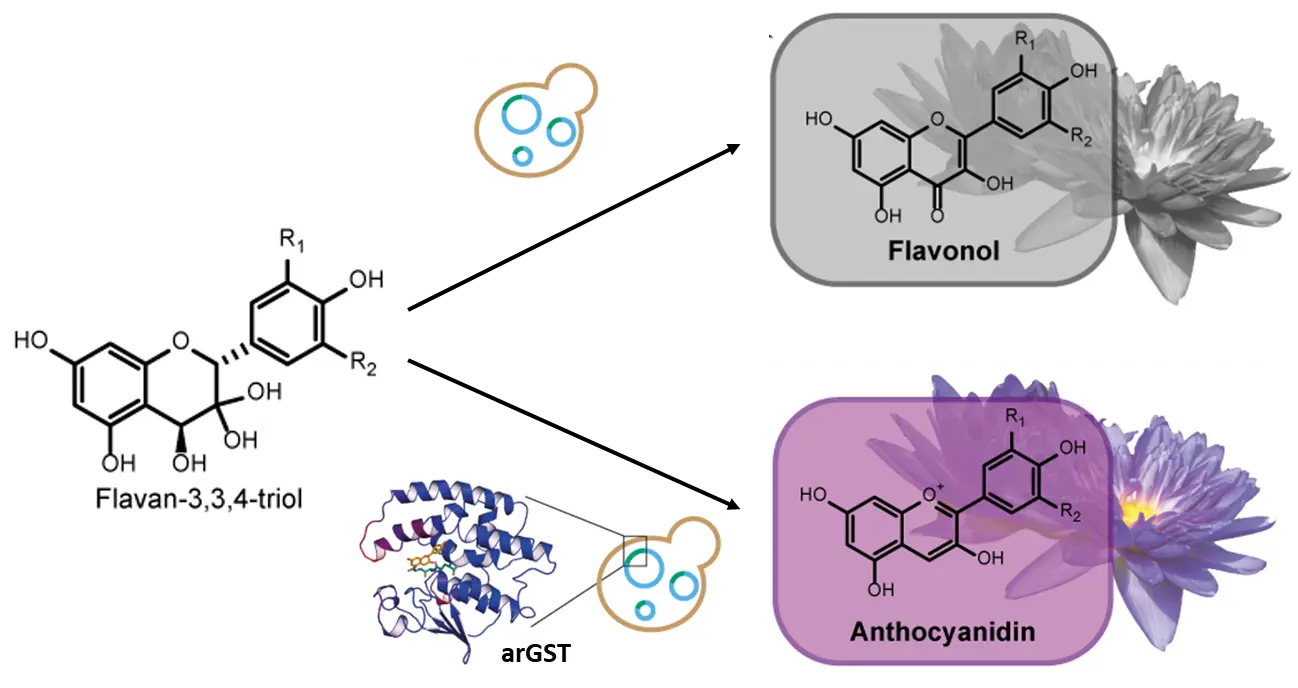Anthocyanins made by baker’s yeast
Anthocyanins are responsible for the bright colors of many flowers. In our publication in Nature Catalysis we show that it is possible to engineer baker's yeast to produce anthocyanins.

Heterologous anthocyanin biosynthesis
Anthocyanins are soluble red, purple, and blue plant pigments responsible for the color of many flowers, fruits, or leaves. Isolating anthocyanins from natural source materials is limited by the quality and availability of raw materials. yet until now biosynthesis of anthocyanidins outside plant cells was not efficient enough for production. Saccharomyces cerevisiae is a well-studied eukaryotic model organism and frequently used as a cell factory. Entire pathways have been successfully reconstructed in yeast, ensuring e.g. the synthesis of natural products of constant quality.
In our publication in Nature Catalysis, we describe that anthocyanin-related glutathione transferases currently discussed as anthocyanin transporters only are in addition catalyzing an essential final step in the biocatalysis, the dehydration of the flavan-3,3,4-triol to cyanidin. Introducing an arGST into the heterogenous biosynthetic pathway in yeast resulted in an >35-fold increase in anthocyanin biosynthesis.
Reference:
The catalytic role of glutathione transferases in heterologous anthocyanin biosynthesis. M. Eichenberger, T. Schwander, S. Hüppi, J. Kreuzer. P. R. E. Mittl, F. Peccati, G. Jiménez-Osés, M. Naesby & R. M. Buller. Nature Catalysis (2023) August 31.